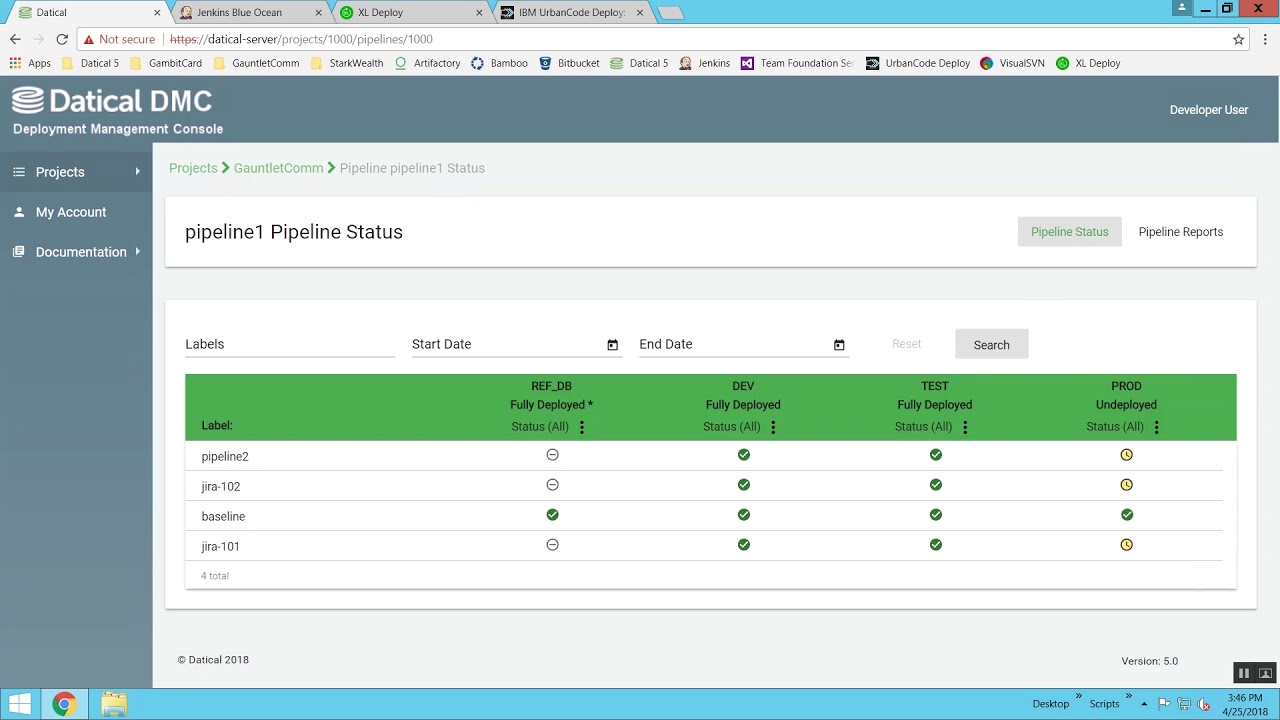Datical Adds Support for AWS, Postgres Database Families; Awarded Patent for Change Management Simulator
Datical’s database release automation is adding support for the Amazon Web Services (AWS) and Postgres databases. Datical also sports a change simulator so users can preview database changes before deployment. IDN talks to CTO Robert Reeves.
by Vance McCarthy
Tags: apps, AWS, database release automation, cloud, Datical, DevOps, Postgres, schema,

CTO

"Database automation that’s built to work with the other tools in the DevOps and cloud application development toolchain is absolutely critical."
Datical is shipping an update to its database release automation solution that supports Amazon Web Services (AWS) and Postgres database families. Datical’s DRA also sports a sophisticated simulator to allow users to preview any database changes before deployment.
The latest Datical update addresses a major barrier to deploying a cloud-centric app strategy, Datical CTO Robert Reeves told IDN.
Prime user profiles Datical is targeting with its latest update, Reeves said, are efforts to:
- build greenfield cloud-native apps with AWS, or
- use PostgreSQL to migrate on-prem legacy apps to the cloud
Reeves explained how Datical’s database release automation technologies help fills the gaps for companies looking to migrate their apps to the cloud but run into problems - – especially when it comes to handling data correctly.
“Moving to the cloud makes it easier to provision and manage the lifecycle of database instances. However, this leads to a vast increase in the number of database instances under management,” he said. “So, database automation that’s built to work with the other tools in the DevOps and cloud application development toolchain is absolutely critical to maintain the consistency and security of datastores.”
The Datical DRA solution was designed specifically to help enterprises move their database workloads to the cloud – and solve many unforeseen problems that can arise when moving apps to the cloud, he added.
In specific, with Datical’s latest version, organizations building greenfield cloud-native apps can leverage Amazon Aurora PostgreSQL, Amazon RDS for PostgreSQL, EnterpriseDB Postgres, or PostgreSQL Community Edition. For those looking at cloud migration (or “lift and shift” projects) for legacy application database workloads to the cloud, they can now do so through Amazon RDS for Oracle.
Moreover, Datical’s latest edition adds several important core features to its DRA platform that will help DBAs, DevOps and DataOps professionals work together on cloud-native apps and cloud migration projects, he added.
The Power to Preview, Adjust Database Changes – Before Pushing To Production
Tops among Datical’s DRA features are its ability to deliver visibility and forecasting for database changes. This is crucial to calming nerves and keeping DBAs and DevOps teams on the same page during deployments.
Users can preview all pending database changes, Reeves told IDN. Changes won’t be made until all team members agree they work as intended - and comply with a company’s governance standards.
Users can control all this functionality that’s to Datical’s Change Management Simulator, for which it just received a patent. The CMS eliminates database downtime by simulating the impact of database changes before they are deployed.
Reeves described how the CMS provides control, automation and peace of mind to DBAs (and DevOps teams) working with database changes – especially with common SQL-based data.
“We see it all the time where a DBA might say, ‘I have these changes, but damned am I nervous [to push them live]. That is exactly what CMS is for,” Reeves said.
Reeves shared a little of how the patented CMS technology works to deliver visibility and assurance.
“SQL is a very declarative and procedural language. It really doesn’t lend itself to this concept that we have in applications, where we have object comparisons,” Reeves told IDN. SQL’s approach is also not compatible with some agile or DevOps practices when where something goes wrong, the team just redeploys an app, he added.
“Our [CMS] patent is on this concept of taking proposed changes of the database and putting them in an object model – and then taking the current state of the database and putting that in an object model,” Reeves said.
“When you have those two things, it’s easy to do the comparison. And, when we do a comparison, we now can do a forecast in the CMS.”
“It is a different approach where we are able to take the proposed change and compare it to the current state and see what’s going to happen. That’s huge. We can see that it will be syntactically correct, we can be sure to apply corporate standards and even [adhere to] SQL best practices.” In specific, Datical can assess the impact of proposed database changes with an in-memory model before the changes are actually deployed to any target database.

CMS lets users preview all their database changes during the workday to allow all team members to review them together – while everyone’s in the office. “So everyone can get together to review the changes at 3 pm, and once everyone agrees everything is right, they can they schedule a production push at 3 am because they know it’s going to work,” Reeves said.
Other notable Datical features include:
Dynamic Rules Engine - Datical is also adding a “dynamic” rules engine automatically enforces DBA rules during the build and release process -- across all proposed database changes. It also provides instant feedback on their database code. The updated rules engine, in conjunction with CMS, also gives teams the ability to fine-tune changes. “It also lets us apply rules, such as ‘do not allow users to create columns greater than 1000 bytes,’” he added.
Database Code Packager – This automates and integrates database change management into the same application release process seamlessly, with zero downtime.
Deployment Monitoring Console – To simplify audits, users can track and get reports on the status of every database deployment across the enterprise.
Uniform enterprise-wide schema deployments – To let users rollout database schema updates throughout an entire organization, not simply within a local department.
At least one analyst says the emergence of Datical’s cloud-ready DRA is great timing, as it comes as enterprises are increasingly focused on moving apps and data to the cloud.
In a statement, Matt Aslett, research vice president of Data, AI and Analytics at 451 Research said, “The flexibility to spin-up new database instances in the cloud makes it easier for application teams to grow their databases as their needs grow. However, it can also mean an order of magnitude increase in the databases under management. Database automation – rather than hiring more and more DBA resources – is the key to addressing this challenge. Datical’s launch of cloud database support provides a solution that helps its customers meet this challenge.”
Datical uses a microservices-based architecture, complete with support for containers and Kubernetes. This approach means Datical can run anywhere – bare metal, VM, private cloud, public cloud – without being limited to a local node or workstation.
Related:
- InfluxData's Latest Updates Optimize Time Series Data for Better Performance, Scale and Management
- Actian Zen 16.0 Update Simplifies Delivery and Boosts Performance of Edge, IoT Apps
- Virtana Infrastructure Performance Management Adds AI-driven Capacity Planning
- e2open’s Supply Chain SaaS Updates Help Firms Reduce Operational Risks with Deeper Visibility
- Report: Endor Labs Identifies 2023 Operational, Security Risks To Open Source
All rights reserved © 2025 Enterprise Integration News, Inc.



